Serengeti National Park Safari
Just 2 hours drive from Mwanza City, where you will reach to the Tanzania's oldest and most popular National Park - Serengeti, also a World Heritage site and recently proclaimed a seventh worldwide wonder. Serengeti is famed for its annual migration, when some six million hooves pound the open plains, as more than 200,000 zebra and 300,000 Thomson's gazelle join the wildebeest’s trek for fresh grazing. Yet even when the migration is quiet, the Serengeti offers arguably the most scintillating game-viewing in Africa: great herds of buffalo, smaller groups of elephant and giraffe, and thousands upon thousands of eland, topi, kongoni, impala and Grant’s gazelle.
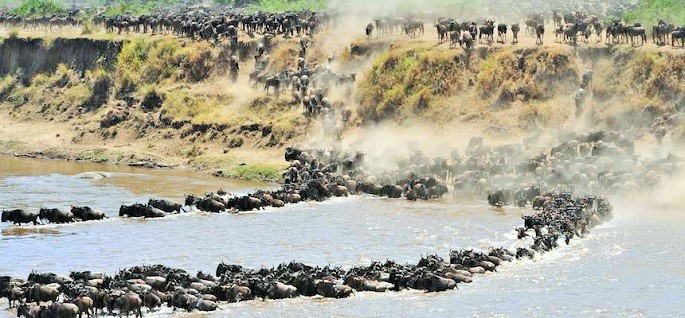
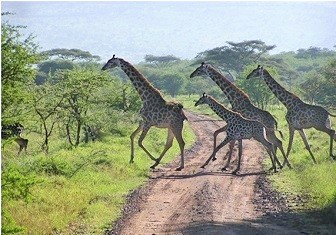
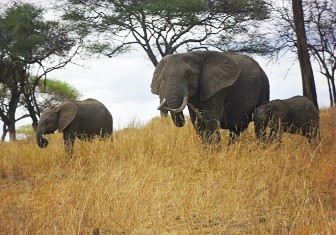
The spectacle of predator versus prey dominates Tanzania’s greatest park. Golden-maned lion prides feast on the abundance of plain grazers. Solitary leopards haunt the acacia trees lining the Seronera River, while a high density of cheetahs prowls the southeastern plains. Almost uniquely, all three African jackal species occur here, alongside the spotted hyena and a host of more elusive small predators, ranging from the insectivorous aardwolf to the beautiful serval cat.
But there is more to Serengeti than large mammals. Gaudy agama lizards and rock hyraxes scuffle around the surfaces of the park’s isolated granite koppies. A full 100 varieties of dung beetle have been recorded, as have 500-plus bird species, ranging from the outsized ostrich and bizarre secretary bird of the open grassland, to the black eagles that soar effortlessly above the Lobo Hills.
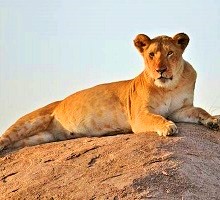
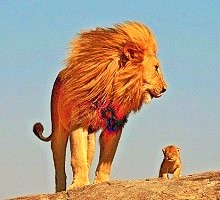

As enduring as the game-viewing is the liberating sense of space that characterises the Serengeti Plains, stretching across sunburnt savannah to a shimmering golden horizon at the end of the earth. Yet, after the rains, this golden expanse of grass is transformed into an endless green carpet flecked with wildflowers. And there are also wooded hills and towering termite mounds, rivers lined with fig trees and acacia woodland stained orange by dust.
Serengeti the largest national park, covering 14,763 square kilometres of protected area that borders Kenya’s Maasai Mara Game Park. Its far-reaching plains of endless grass, tinged with the twisted shadows of acacia trees, have made it the quintessential image of a wild and untarnished Africa. Its large stone kopjes are home to rich ecosystems, and the sheer magnitude and scale of life that the plains support is staggering. Large prides of lions laze easily in the long grasses, plentiful families of elephants feed on acacia bark and trump to each other across the plains, and giraffes, gazelles, monkeys, eland, and the whole range of African wildlife is in awe-inspiring numbers.
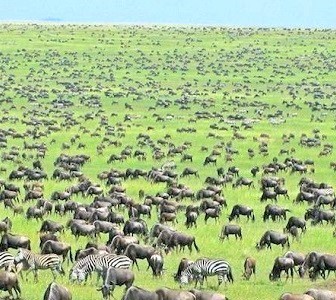




Aside from traditional vehicle bound safaris, hot-air ballooning over the Serengeti plains has become a safari rite-of-passage for travel enthusiasts. The flights depart at dawn over the plains and take passengers close over the awakening herds of wildebeest, zebra, gazelle and giraffe. The extra altitude allows guests to witness the striking stretches of plains punctuated only by kopjes. Up in the sky, you have Africa all to yourself!
A million wildebeests each one driven by the same ancient rhythm, fulfilling its instinctive role in the inescapable cycle of life: a frenzied three-week bout of territorial conquests and mating; survival of the fittest as 40km (25 mile) long columns plunge through crocodile-infested waters on the annual exodus north; replenishing the species in a brief population explosion that produces more than 8,000 calves daily before the 1,000 km (600 mile) pilgrimage begins again.
When to go
To follow the wildebeest migration, December-July.
To see predators, June-October.
Click here to see how to get here from your country.
See also the Northern Circuit Tour of Tanzania or Wildlife Tourism attractions.
For more information contact us.
- Serengeti Park
- Northern Circuit Tour
- Saanane Island Park
- Rubondo Island Park
- Beaches
- Rocks Tourism
- Igogo Caves
- City Tour
- Bujora Museum
- Gunzert House
- Markets & Shopping
- Adventure Tourism
- Kageye Historical site
- Volunteer Tourism
- Sporting Tourism
- Investment Opportunities
- Butiama Museum
- Ukerewe Tourism
- Livestock Tourism
- Religion Tourism
- Slums Tourism
- Historical Sites
- Events Tourism
- Farming
- Transportation Adventure
- Natural Remedies
- Education Tourism
- Eating Tourism
- African Lifestyle
- Sengerema
- Misungwi G.R.
- Kagera Tourism
- Kagera Culture
- Mara Culture
- Mara Touring
- Geita Tourism
- Rwanda and Burundi
- Visit Uganda






Follow us